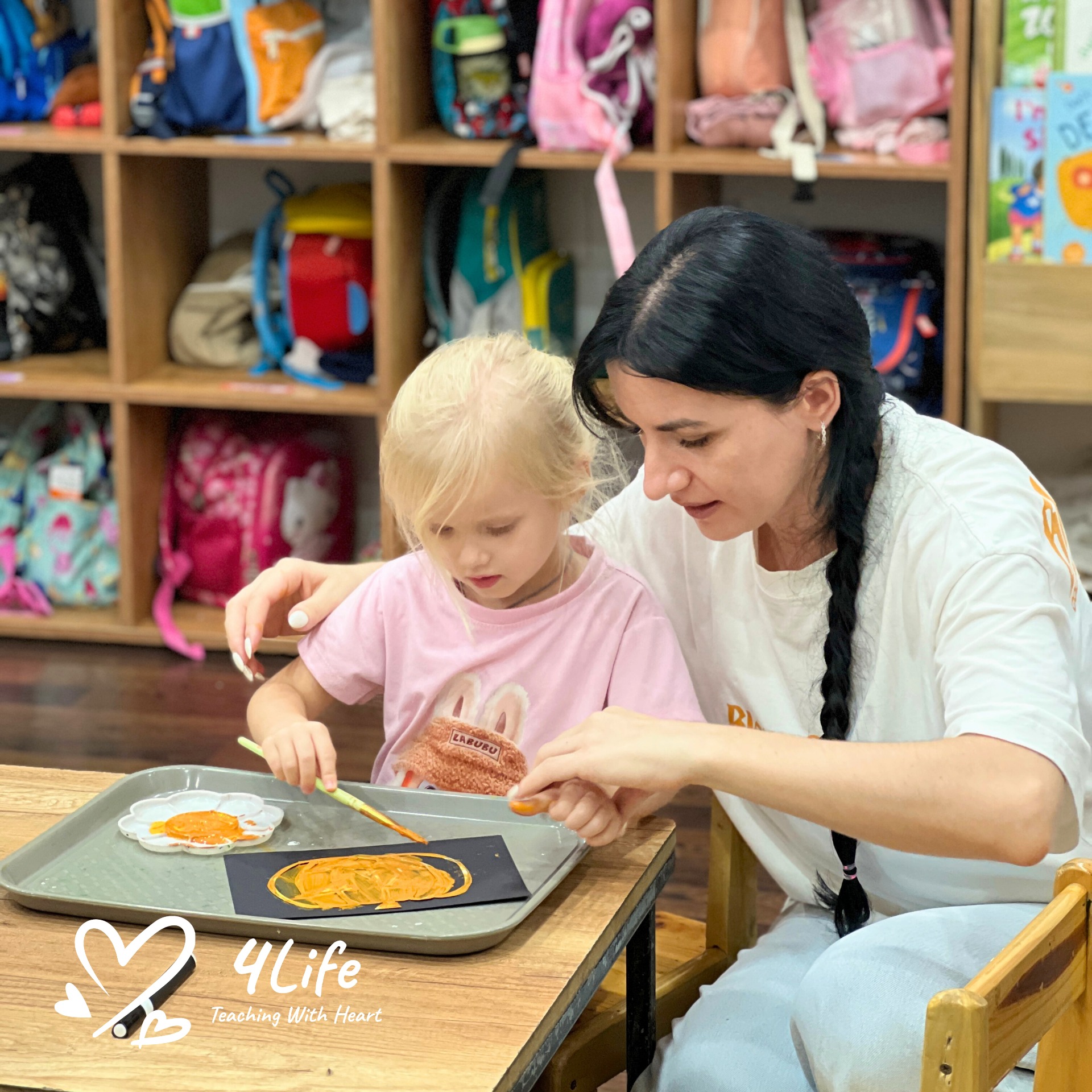Sidestepping tantrums takes more than quick fixes – it takes patience, awareness, and connection. Tantrums are a normal part of childhood, but with thoughtful guidance, they don’t have to take over your day. Let’s find out with 4Life Education how to handle tantrums calmly and help your child grow through them.
Why sidestepping tantrums matters?
Tantrums are common in early childhood, especially during toddler and preschool years. They are often loud, unpredictable, and emotionally intense—for both the child and the parent. In the moment, it can be tempting to shout, threaten, or give in just to make it stop. But sidestepping tantrums doesn’t mean ignoring them. It means understanding what’s really going on and responding in ways that help your child develop emotional awareness and self-regulation.

Why sidestepping tantrums matters?
When a tantrum strikes, someone needs to stay calm—and that someone is the adult. Your child is not trying to make your day harder. She’s struggling with big feelings in a body that isn’t yet equipped to handle them. With support and consistency, children can learn healthier ways to express frustration, sadness, or disappointment.
Understanding the causes of tantrums
Most tantrums fall into two categories:
– The overwhelmed tantrum: This happens when a child is tired, hungry, overstimulated, or not feeling well. In these moments, emotions overflow because the child’s physical needs aren’t being met.
– The power-struggle tantrum: These occur when a child feels frustrated, unheard, or powerless. Saying “No!” or throwing a tantrum may be their only way of asserting control.
Recognizing which kind of tantrum is unfolding can help you respond in a way that calms rather than escalates the situation. If your child is melting down because she missed her nap, try to meet that need gently. If she’s testing limits, stay firm and calm while offering connection and choices.
Staying calm in public situations
Tantrums often happen at the worst possible time—at the grocery store, in a restaurant, while visiting friends. In these moments, parents naturally feel embarrassed, overwhelmed, or pressured to “fix” the behavior quickly. But reacting with threats or punishments rarely helps.

Sidestepping tantrums
Instead, pause. Take a breath. Remember that the tantrum is a form of communication. Ask yourself: What is my child trying to express? Is she tired? Hungry? Overstimulated? Frustrated?
If the tantrum is physical in nature, gently remove your child from the situation to a quieter, more private space. Speak in a soothing voice. Lowering your own volume can often help your child begin to settle.
At 4Life Education, we encourage families to approach tough moments with empathy and presence. Let’s find out together how these moments can build resilience—not just frustration.
Responding to physical or emotional needs
Young children can’t always explain how they feel, but over time, most parents learn to recognize the patterns. When a tantrum begins, try to tune in:
– If your child is hungry, offer a healthy snack—even if it’s not mealtime.
– If your child is overtired, reduce stimulation, speak softly, and guide her to a quiet place to rest.
– If your child seems unwell, speak gently and offer reassurance. Seek medical help if necessary.
– If your child is upset after waiting while you talked with someone else, give her your full attention for a few moments.
In many cases, simply addressing the physical or emotional need can quickly reduce the tantrum’s intensity. It’s not about rewarding the behavior—it’s about responding to the message underneath it.
Helping with transitions
Transitions are especially hard for toddlers and preschoolers. Leaving a playground, stopping playtime, or moving from one activity to another can cause distress. Give your child advance warning before transitions and offer choices when possible.

Helping with transitions
For example:
“We’ll be leaving the park in five minutes. Do you want one more slide or one more swing?”
Clear, calm communication paired with choice gives your child a sense of control and prepares her for the next step.
Managing power struggles with grace
Sometimes tantrums happen simply because your child is testing the rules. That doesn’t mean she’s bad—it means she’s learning. When this happens:
– Avoid arguing or yelling.
– Acknowledge her feelings: “I see you’re really upset because you want to stay.”
– Stay firm and loving: “It’s time to go home now. I know it’s hard.”
Set boundaries calmly and consistently. Children feel safe when they know the rules will not shift based on mood or pressure. Over time, this builds trust and emotional security.
Avoiding common tantrum triggers
Prevention is powerful. Many tantrums can be sidestepped by planning ahead and noticing patterns:
– If shopping leads to tantrums, try shopping without your child when possible.
– If sudden plan changes upset your child, talk through the schedule in advance.
– If your child struggles with waiting, bring books, snacks, or quiet toys to keep her engaged.
Prepare your child for upcoming activities and let her know what you expect. “We’re going to the store. We’re not buying toys today, but you can help me pick out the fruit.”
When children know what’s coming and what the limits are, they’re less likely to feel blindsided—and more likely to cooperate.
Supporting healthy stress responses
When a child has a tantrum, her brain and body enter a stress response: fast heart rate, elevated cortisol, and emotional flooding. If a calm, caring adult is present, the stress response is softened. Over time, this teaches your child how to move through frustration safely.

Supporting healthy stress responses
Sometimes, even when you’ve done everything right, the tantrum doesn’t stop. In that case, gently disengage. Let your child know, “I’ll be right here when you’re ready for a hug.” Then quietly step aside, read a book, or sit nearby. This lets her know she is not alone—and also that you will not escalate with her.
Avoiding harmful responses
When emotions run high, it’s easy to react. But some responses do more harm than good. During tantrums, avoid:
Hitting or spanking, which models aggression
– Restraining your child unless she’s in danger
– Threatening or yelling
– Arguing or debating with an irrational child
– Shaming, mocking, or comparing
– Handling the tantrum in front of a crowd—seek privacy when possible
Respect your child’s dignity and help her learn emotional skills by staying calm yourself. Your example is her greatest teacher.
Bedtime tantrums and how to prevent them
Evening tantrums are common. Children may resist bedtime for many reasons—they want more playtime, fear missing out, or simply want to stay close to you. A calm and predictable bedtime routine helps ease the transition.

Bedtime tantrums and how to prevent them
Start your bedtime routine early. Give gentle warnings: “In ten minutes, we’ll start getting ready for bed.” Follow a consistent sequence—bath, pajamas, brushing teeth, story, cuddle, goodnight.
Offer limited choices: “Do you want Mommy or Daddy to tuck you in?” Create a calm, cozy atmosphere with quiet music or soft lighting.
Once the routine is over, say goodnight clearly and leave the room. If your child gets up, gently return her to bed. Avoid negotiation, but stay warm and firm. Over time, this builds bedtime confidence and reduces power struggles.
Sidestepping tantrums isn’t about avoiding your child’s emotions—it’s about helping her learn to manage them. Through calm routines, thoughtful responses, and emotional connection, you teach your child how to move through big feelings safely. Every tantrum is a chance to build trust, communication, and emotional resilience.








0 Comments